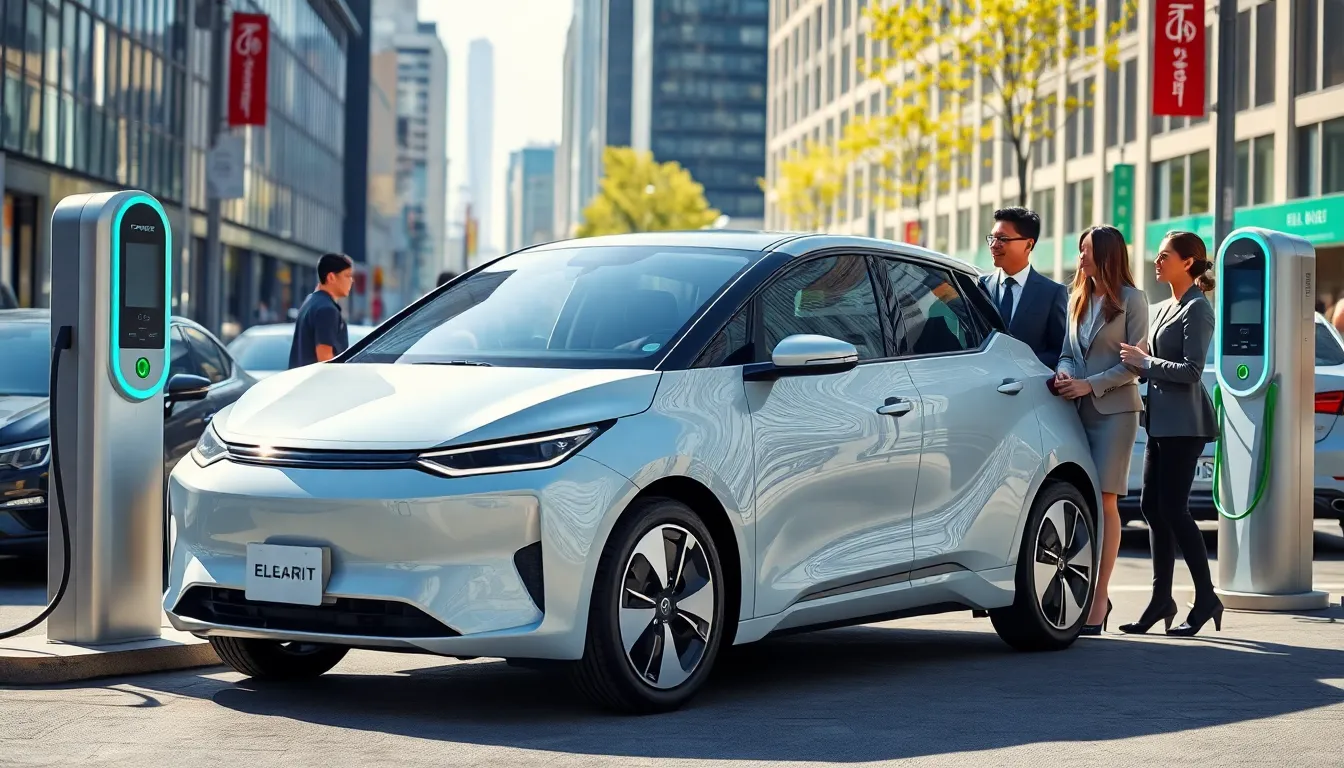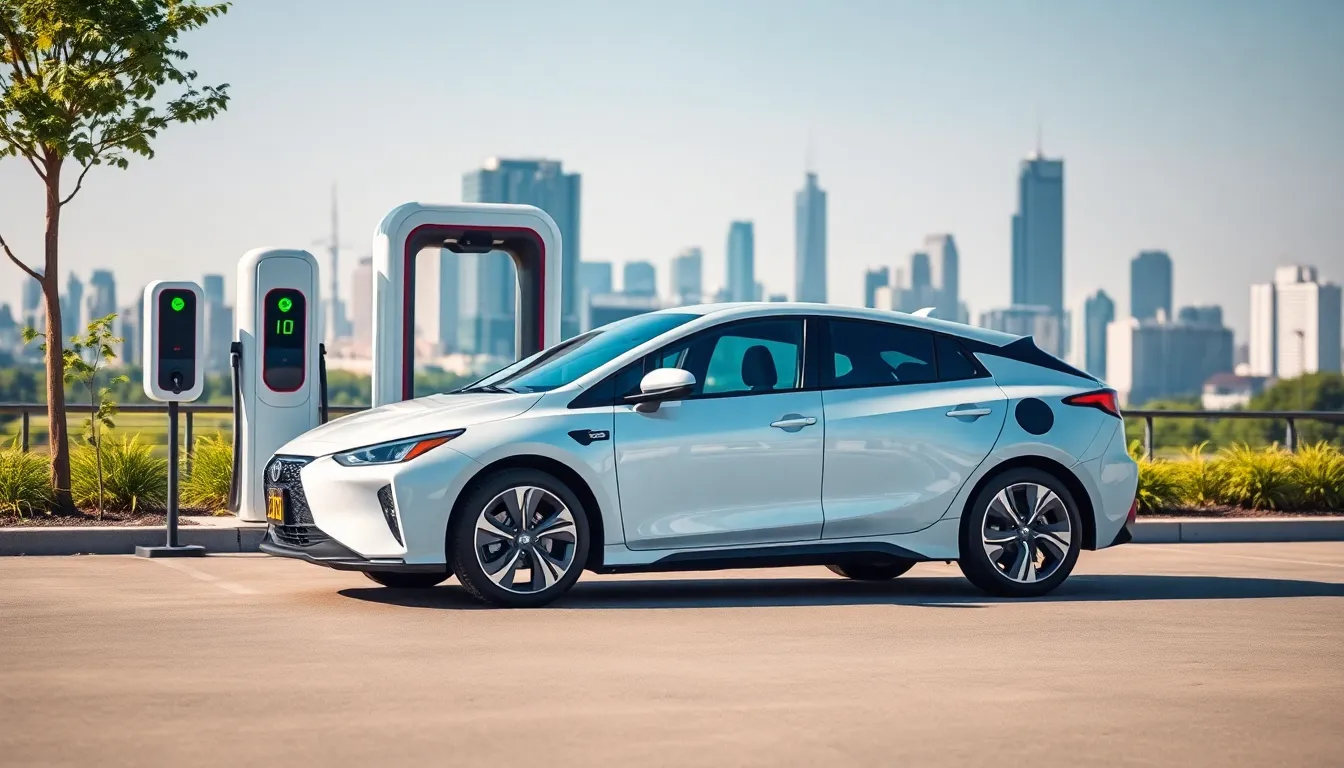Japanese electric vehicles (EVs) are taking the automotive world by storm, and if you haven’t noticed yet, it’s about time you buckle up. From quiet streets to high-tech highways, Japan is shifting gears into the electric future. Packed with innovation and government support, these EVs don’t just drive, they fly with potential. So, hold onto your chargers as we explore the electrifying journey of Japanese electric vehicles, and perhaps even crack a joke or two along the way. Who knew saving the planet could be this much fun?
Table of Contents
ToggleThe Evolution of Electric Vehicles in Japan

The journey of electric vehicles in Japan resembles a thrilling rollercoaster ride. It all began in the early 20th century, when the first electric vehicles started to whisper along the roads. But it was during the 1970s oil crisis that Japan realized the game was changing. The country quickly pivoted to embrace alternative energy sources, sparking a newfound interest in electric technology.
Fast forward to the 21st century, where eco-consciousness surged alongside technological advancements. Major automakers began pouring resources into electric vehicle research, setting Japan apart on the global stage. Nissan’s Leaf, launched in 2010, was a significant milestone, it became the world’s best-selling electric car and changed the public perception of EVs through its practical features and remarkable range. Talk about a groundbreaking moment.
Currently, Japan’s EV evolution is characterized by a blend of both traditional auto manufacturing prowess and a robust ecosystem for innovation. From the introduction of electric buses to the rise of compact, efficient vehicles, the landscape is more dynamic than ever.
Key Players in the Japanese EV Market
When discussing the Japanese EV market, several key players stand out. First and foremost is Nissan, heralded for its pioneering efforts with the Leaf. Nissan’s investment in battery technology and extensive charging infrastructure has propelled it into the forefront of the EV race.
Then there’s Toyota, who is a giant in the automotive industry, leading the charge with its hybrid models for years. Recently, Toyota has shifted gears towards fully electric vehicles and announced ambitious plans for its electric lineup. Their solid reputation for reliability gives them an edge in a market where consumers crave trust.
Honda and Mazda are also players in the mix. They are experimenting with innovative designs, pushing boundaries in style and performance. Smaller manufacturers like Mitsubishi and Subaru are also staking their claim, especially with unique offerings that cater to specific consumer needs. The industry buzzes with healthy competition, igniting creativity and technological advancement.
Technological Advancements and Innovations
Japan is no stranger to technology, and the electric vehicle sector is a thrilling playground for innovation. Battery technology, perhaps the heart of any EV, has seen remarkable strides. Advances in lithium-ion batteries promise longer ranges, faster charging times, and improved efficiency. Battery swaps, instant battery replacements, are also becoming a viable option, similar to changing a smartphone’s battery.
On the software side, the rise of autonomous driving technology is another exciting frontier. Japanese brands are investing heavily in self-driving systems, which are expected to revolutionize transportation. Imagine catching a nap while your car navigates traffic. Digital connectivity is gaining prominence, with features like remote monitoring and smart energy management enhancing the overall EV experience.
Also, vehicle-to-grid (V2G) technology emerges as a game-changer, allowing EVs to communicate with the grid. This innovation not only optimizes energy use but also contributes to a more sustainable energy ecosystem.
Government Policies and Support for EVs
Government backing sits at the core of Japan’s electric vehicle strategy. Substantial grants and incentives encourage manufacturers and consumers alike to adopt EVs. Tax reductions, subsidies for purchasing electric vehicles, and funding for charging stations are all tools in the government’s playbook to push the EV agenda forward.
The 2050 carbon neutrality goal stands as a pivotal factor. The Japanese government has outlined ambitious plans to achieve net-zero emissions by 2050, with electric vehicles playing a critical role in this transformation. Public campaigns aim to raise awareness and shift public attitudes towards EVs, making them not just an option but a preferred mode of travel.
Also, collaborations between the government and private sector are on the rise, creating a seamless network of support that extends across technology development, infrastructure growth, and consumer engagement. So, Japan’s policies don’t just slap a sticker on an EV, they provide a roadmap to a cleaner, greener future.
Consumer Attitudes Towards Electric Vehicles
In the eyes of consumers, electric vehicles are steadily edging their way into the mainstream. Initially met with skepticism surrounding range anxiety, the fear of running out of battery, public perception is evolving. Consumers now recognize the practicality and advantages of EVs as manufacturers continue to enhance battery capacity and charger availability.
Research indicates that environmental concerns significantly impact consumer preferences. Many potential EV buyers are keen on reducing their carbon footprint, which plays right into the hands of Japan’s eco-friendly image. In fact, younger generations are particularly leaning towards sustainability, making the electric vehicle market not just a choice but a lifestyle statement.
That said, hurdles remain. The costs associated with purchasing an EV can be daunting, even with government incentives. Also, challenges tied to a limited charging infrastructure in some areas might deter potential buyers, but efforts are underway to alleviate these issues.
Future Trends in the Japanese Electric Vehicle Landscape
The future of Japanese electric vehicles is nothing short of electrifying. Trends are unfolding as rapidly as a driver’s foot could hit the accelerator. As emissions regulations tighten, traditional automakers are feeling the heat, pushing them to pivot towards EV development.
Decentralized energy systems are likely to gain traction, positioning EVs not just as vehicles, but as integral components of the energy grid. As society becomes more invested in smart energy solutions, integrating EVs into everyday life will be pivotal.
Also, substantial growth in the charging infrastructure is on the horizon. From rapid chargers to wireless charging stations, the landscape is set to become user-friendly and adaptable. Not to forget, the rise of fast-charging technology will ease consumers’ minds when they hit the road.
So while there’s a lot to look forward to, the ongoing transformation points to a future where electric vehicles are not just part of the conversation but lead it.



